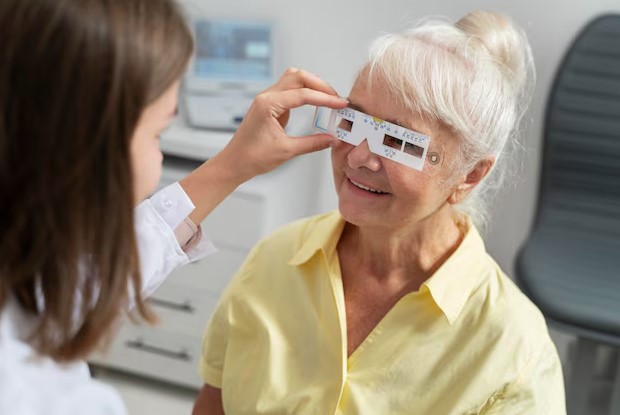
Vision changes and eye conditions become more common with age, but women are at higher risk of developing these issues than men. Around two-thirds of the global population with vision loss and blindness are women. There are a variety of reasons why women bear a higher burden of vision, from physical challenges to socioeconomic barriers.
Here’s why ocular diseases are more common in women and how you can preserve your eye health, especially as you age:
Women and eye health
Life expectancy
Women typically have a longer life expectancy than men, and with age comes a higher risk of eye conditions. Age-related macular degeneration, cataracts, glaucoma, and other eye conditions become more common as you get older, making women the larger demographic of people affected by these conditions. As a result, more women also struggle with limitations in their activities in daily life; around 13% of men in England and the United States struggle with hindrance in daily life, compared to 16% and 19% of women, respectively.

Societal disparities
Despite being affected by vision issues at higher rates than men, women often face barriers to healthcare. Disparities in healthcare prevent women from getting comprehensive care tailored to their specific needs and challenges, affecting vision health. Gender pay gaps also persist, preventing women from accessing the same quality of healthcare as men due to costs. Many women are also held back due to societal norms. By shouldering most of the burden of home and family care, their eye health often suffers due to other daily priorities. Even at an older age, many women may also be juggling home life and their jobs, further limiting their time for eye care.
Many women find it challenging to overcome barriers to eye care. Fortunately, there are many easy and accessible ways to improve and maintain eye health.
How to care for your eyes
Wear sunglasses
From sailing the seas and trekking mountains to browsing outdoor markets and relaxing in parks, there are many outdoor tasks or activities ahead for you in your older years. With sun exposure from work or daily life comes the need for protection, as UV rays can cause and contribute to conditions like macular degeneration and cataracts. Wearing sunglasses outdoors can keep your eyes safe and healthy for longer. A pair with 100% UVA and UVB protection is essential for optimal protection. They make a great fashion statement, too. Stylish women’s sunglasses can elevate your look, whether casual or dressy. Ray-Ban’s selection offers timeless styles like the Original Wayfarer Classic or trendy models like the Kiliane Bio-Based, so you can pick one that suits your features and style. The brand is also known for craftsmanship and durability, ensuring you can wear these shades for years.

Stay hydrated
Dry eye can happen to anyone at any age, but the risks increase as you get older. It brings more than discomfort; it can increase the risk of infections and injuries that can jeopardize your vision further. Staying hydrated can keep your eyes lubricated and healthy, ensuring they get the moisture and nutrients they need to function and stay comfortable. Drinking enough water daily can help support tear production and keep the eyes’ surface moist. To ensure enough hydration, you can bring a reusable water bottle to encourage you to drink throughout the day, no matter where you are. If you’re not a fan of plain water, you can add lemon or cucumber for flavor. Bottles like air up also turn regular water into flavored water using scent pods for scent-based taste. Artificial tears can also provide relief from dryness.
Live a healthy lifestyle
Healthy living offers a plethora of benefits, including eye health. Eating a nutritious diet, exercising, getting sufficient sleep, and more can keep your eyes healthy and stave off eye conditions at bay. A diet rich in vitamins A and C and antioxidants lutein and zeaxanthin enhance cell health and keep free radicals from damaging them. Exercising also prevents abnormal blood vessel growth and lowers intraocular eye pressure, which can cause macular degeneration and glaucoma. These can also help you avoid developing diabetes, which can cause vision through diabetic retinopathy.
Despite the strides in healthcare and equity, eye care is still out of reach for many women. Healthcare systems worldwide must invest in quality care for women to lower rates of vision loss and blindness and enhance their quality of life.
Photos from Freepik


